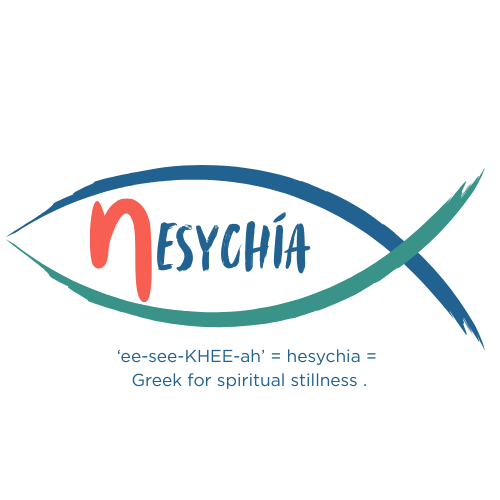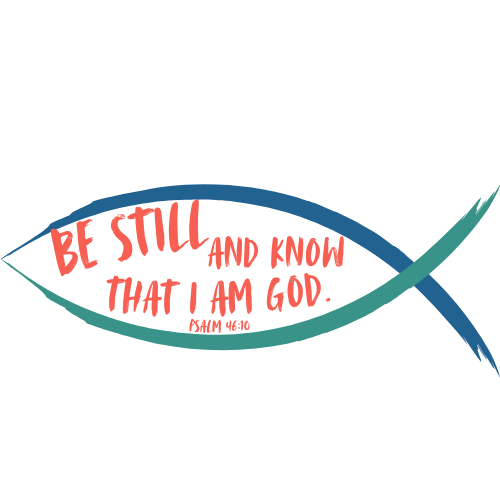'Be still, and know that I am God'
Finding peace through interior silence
Silent prayer practice
It was my senior year of college.
I saw a flier for a 5-day silent retreat - over spring break! I laughed out loud - who would spend their last chance for raucous undergrad partying out in the country, with nothing but their own thoughts for company?
Me, apparently.
Something about the offer grabbed me - and scared me. I signed up that day.
The retreat was based on the Ignatian Exercises - spiritual self-examination and opening to God’s call.
I am someone who never thought I could be quiet for a day - much less 5 of them in a row. Yet the experience changed my life, in so many ways.
Silence was an important part of prayer life for early Christians, especially the monastics (the first monks and nuns, living in community removed from society).
Monastics like the Desert Fathers retreated to solitude and silence in search of encountering God away from worldly distractions.
Their goal was to live a life completely focused on God.
The Scriptural basis for this was Jesus’ temptation in the desert, and several monastics wrote about how their own inner demons arose when everything around them quieted down.
And after their interior struggles, they found something deeper: the inexhaustible peace of God’s presence and power.
.Finding and cultivating silence - interior and exterior - is still a monastic practice, and an important part of Christian prayer.
My own experience with extended silence was dramatic - and it was not nearly as hard as I imagined it would be.
When I stopped speaking, I gradually stopped ‘narrating’ my life in my head. I stopped being full of ‘to-do’ lists, and worries, and even observations. I didn’t feel any need to worry about whether the people with me were comfortable, or comfortable with me.
I let them be in their own space with God, and let myself be in mine.
Gradually, my mind settled down and I felt my soul expand. There’s no other way to explain it, except to say I was fully at peace. There was a sense of joy - and goodness - that permeated my whole being. That was beyond words.
On the last day of retreat, I stayed in the chapel after Sunday Eucharist, all alone. I bathed under the light from the stained glass.
And I heard Jesus say: ‘Do this in remembrance of me.’
I knew I was called to the priesthood, even though at the time I was a 22 year-old Roman Catholic girl.
I treasured these words - spoken and heard in silence - even though I knew it could never be.
Ten years later, almost to the day, I was ordained in the Episcopal Church.
The practice of silence is one of Trexo’s stretching exercises for good reason: It has an important place in the early Christian church.
AND - it increases our soul’s capacity for JOY.
The early monastics wanted nothing more than to spend their lives completely focused on God.
We may not want that: personally, I want to focus on relationships with those I love, on work, on life’s pleasures.
What I discovered through silence is that focusing completely on God - even for a short period of time - helps me see that every other part of my life is encompassed in this.
Focusing on God is focusing on work, relationships, pleasure, beauty, peace.
Creating time and space for silent prayer:
Schedule time for silence.
Make it intentional, something structured to look forward to.
Start small - but give yourself time, too. Perhaps a silent morning - a few hours - at first.
Silence takes a little bit to get into. Interior ‘noise’ peels away gradually.
Try to be away from home, and all its distractions.
Be somewhere where no errand or task is going to present itself.
Walk in a park - or even someplace busy!
When I lived in New York City, I would take the bus when I wanted silent time. I called it the ‘extroverts monastery’.
Don’t read! Or listen to music.
Putting away electronic devices during silent prayer is obvious.
What’s not so obvious - reading (even Scripture) puts words in your head. Music does the same.
Let the deepest silence come - the kind that is beyond words.
This is where you will find God.
Consider attending a silent retreat - or creating one of your own.
Silent retreats can be solo - or with others. Relationships are often deepened through experiencing silence together - those places beyond words that are between us and between us and God.
Digital Silent Retreats are available if you don’t want to travel, or need a guide.






THIS is why my Substack is named “Be Still and Know”… because when I began to practice silent prayer and contemplation, my whole life changed. The grounding in God that we find during silent moments carries over into our lives and helps us to love better, to BE better.